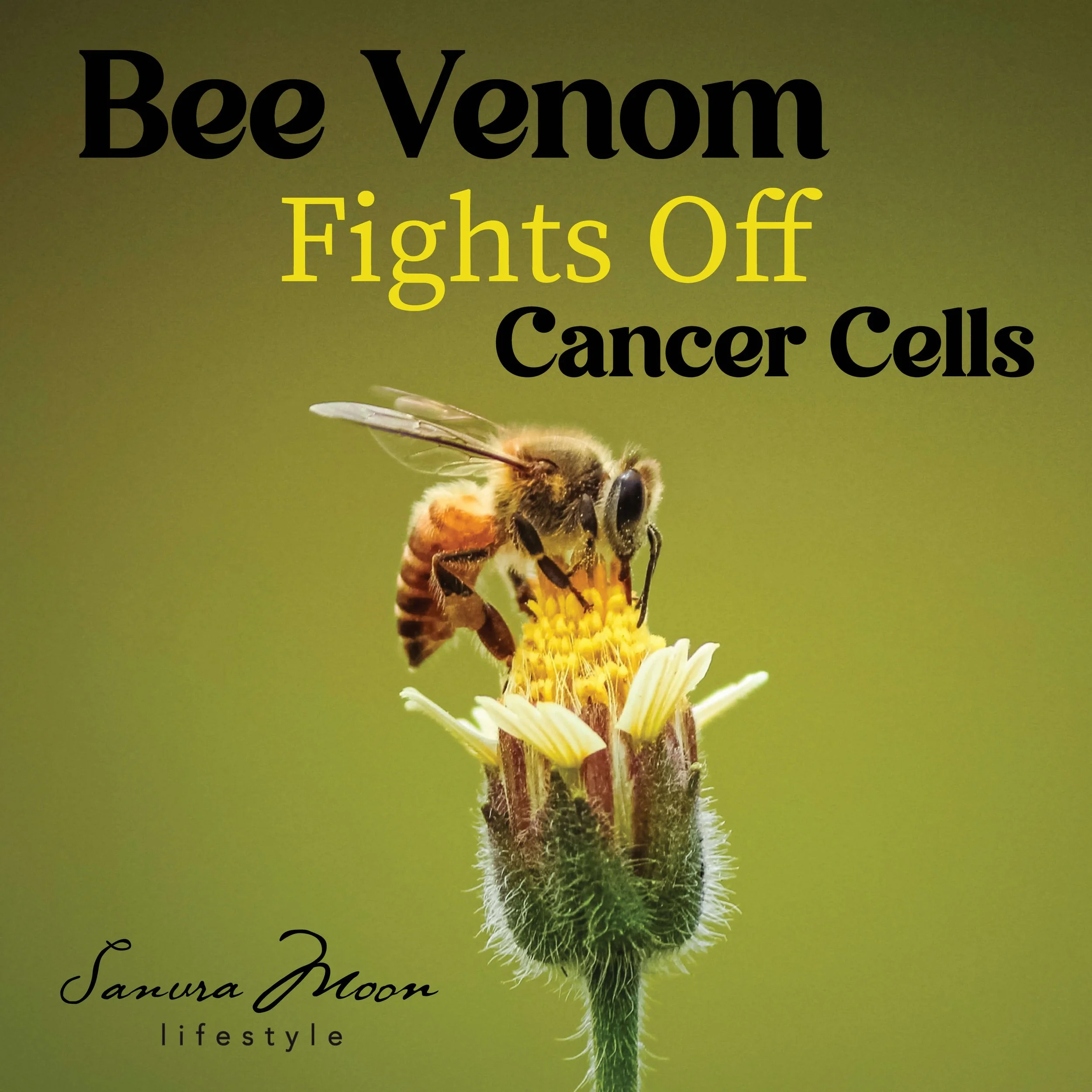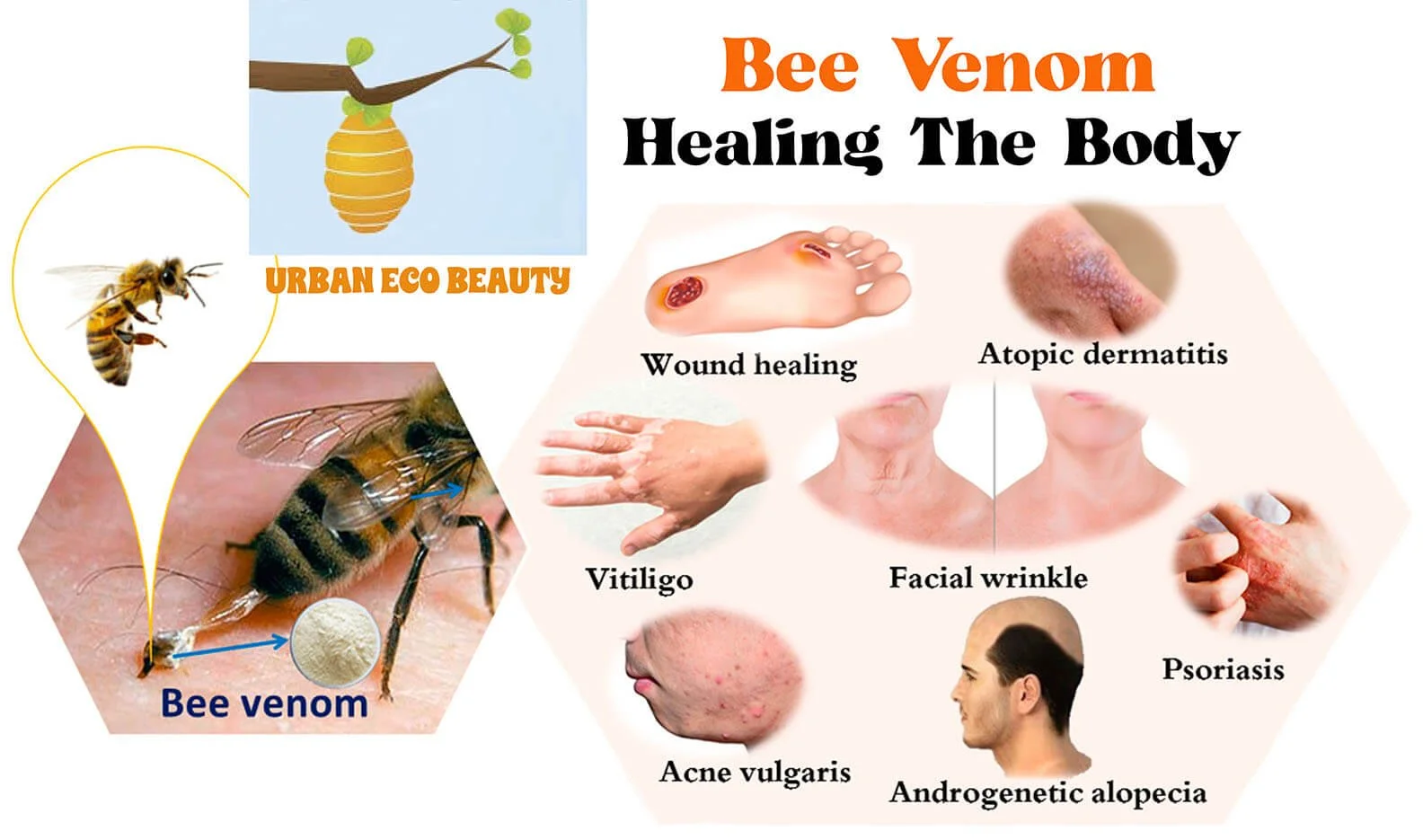Bee Venom Therapy Used To Help Cure Cancer
Bee venom is a natural substance made from the venom of honeybees, used for many centuries as an alternative medicine. Recently, there has been increasing interest in its potential as a remedy for cancer, of course we have always known its been used as a remedy for ages around the world.
History of Bee Venom Use
Bee Healthier:
The use of Bee Venom for medicinal purposes dates back thousands of years, with its first mostly known documented use in ancient Egypt. Since then, it has been used for various purposes in traditional healing systems, particularly in Europe and Asia. In traditional Chinese medicine, for example, bee venom is used to reduce inflammation and treat a wide variety of ailments, including cancer. It has long been believed to stimulate the immune system, enhance blood circulation and reduce inflammation, as well as being a topical analgesic. Humans have been benefiting from bees and their nourishing superfoods since the beginning of human life on earth. From Cleopatra using honey to keep her youthful glow to Hippocrates prescribing propolis to remedy everything from sores to bacterial infections.
In my organic skin care shop, Urban Eco Beauty, the apiaries we choose and support put the bees first. They ensure the bees are healthy, pollinate in safe locations, and they never over-harvest. Leaving the bees with plenty of honey, pollen (bee protein), and propolis (the immune system of the hive) of their own. Raw honey is so high in enzymes that it’s the only food on earth that never goes bad!
Bee Venom and Cancer:
Honey Bee Venom (HBV, Apis mellifera) is a bitter, colorless liquid, and its active portion contains a mixture of proteins, such as phospholipase and melittin. Melittin is known as a powerful anti-cancer peptide. Bee Venom acupuncture and melittin have been used to control neuropathy caused by cancer chemotherapy. It turns out that melittin, for example, is a pretty powerful anti-inflammatory compound that triggers the body to produce cortisol and is estimated to be 100 times more potent than cortisone. It may be a potential treatment against bacterial and fungal infections because of its antimicrobial properties; in the right dose, the toxin weakens a cell until it pops, and it's that ability to destroy one cell without damaging another that prompted scientists to explore its efficacy against diseases including certain types of arthritis and cancers, in addition to HIV and the aforementioned multiple sclerosis (MS).
Recent studies have demonstrated that the venom from honeybees can be effective in treating various types of cancer. This is because bee venom contains a number of biologically active compounds, such as melittin, apamin, adolapin and phospholipase A2 (PLA2) which have been shown to have anti-cancer properties. For example, PLA2 has been found to induce apoptosis (cell death) in certain types of cancer cells, while melittin has been found to inhibit the growth of certain cancers. In addition, bee venom has been observed to be able to stop cancer cells from metastasizing (spreading to other parts of the body).
Risks and Benefits of Bee Venom Therapy:
When a bee stings the skin, the stinger enters the skin and this can cause to some a localized allergic reaction, including inflammation, itching, swelling and redness at the site of injection. This is why some like to be monitored by a holistic doctor when undergoing this form of treatment. Deaths due to bee stings are rare. Many who are allergic to Bee Venom have hyaluronidase-specific IgE antibodies.
There are many potential benefits to using Bee Venom therapy. For example, it has been found to be an effective complementary treatment for cancer, with no reported side effects other than the local allergic reaction in some. In addition, it has been studied as a potential alternative to man-made lab created chemotherapy (chemo a well known big money making business), and other more drastic forms of cancer treatment that is more mainstream in hospitals.
I advocate for the natural holistic care of the body. All things God creates is what I use to help heal the body as a whole. As I believe we are made from the earth, therefore what comes from the earth directly as designed for human life to thrive, is what I believe in using, so I share my findings based on that.
How To Harvest Bee Venom:
Dried venom is mostly light yellow color and it also can be of brown color, due to oxidation of some of the venom proteins.
Honey bees can sting as many as 10 times, under the right circumstances. Some Bee Therapies use the Bee directly by holding it in tweezers and have it sting a direct location. While in the wild it's unusual for the full contents of the venom sac to be used in one sting, it is not unusual for therapy bees to do so, producing between 0.15 and 0.3 grams of venom per sting. Depending on the individual and the condition being treated, the BVT schedule may vary; it could be as many as hundreds of stings per week. While that may sound like a lot of stings, on average, an adult can safely withstand the effects of 10 bee stings per every 1 pound of his or her body weight.
Bee Venom Collector:
Some bee keepers use internal devices, where they place collection plates right inside their bee hives. These glass plates use harmless electrical currents, but this is not entirely safe for the bees, because some bees can die if they are stung by other bees during the frenzy.
Others use a battery-powered collector which is placed outside the hive, near the entrance. It works by using a small pulsation that is so low that the bee doesn't even realise it. It's only one in 10,000 bees that actually react to it and they spray the device with a pheromone. The pheromone then attracts other bees out of the hive and they attack the collector. The insects sting the glass plate which collects the venom, and does not hurt the bees. The harvesting process can take less than an hour, and the bee venom is then scraped from the glass plate and can sell for more than $120 per gram.
It was a common misconception that bees died when they deployed their sting. Bees instead can die when they sting someone directly because bees have a barbed stinger tip, so when they sting someone this can hook into the flesh, and then the bee is ripped apart and so the bee dies.
Bee Venom Health Study Finds:
Bee venom contains at least 18 pharmacologically active components including various enzymes, proteins, peptides, amines and mineral. Bee venom is safe for human treatments, the median lethal dose (LD50) for an adult human is 2.8 mg of venom per kg of body weight.
As compared with other human diseases, accidents and other unusual cases, the bee venom is very safe for human treatments.
Bee venom components were reported to have a wide variety of pharmaceutical properties. Due to its anticoagulant and anti-inflammatory properties in apitherapy bee venom was mainly used to treat many inflammatory disorders such as arthritis, bursitis, tendinitis, dissolving scar tissue, herpes, joint disease, rheumatoid arthritis, Lyme disease, Multiple Sclerosis and osteoarthritis. Furthermore, research in various animal experimental models with inflammatory diseases demonstrated that Bee venom administration was successfully effective in suppressing the inflammation. Several studies prove that bee venom PLA2 and melittin may be a new therapeutic approach to treatment of Alzheimer Parkinson diseases.
The main component of bee venom is melittin.
Bees with an aggressive stinging action produce a more-complex protein-rich venom.
In high temperatures, bees produced less venom and docile bees produced less, but other management factors like diet didn’t really affect the volume of venom.
Most of the notable and exciting news have spread on September 2, 2020 that bee venom can kill severe form of breast cancer! Honeybee venom and melittin suppress the activation of EGFR and HER2 by interfering with the phosphorylation of these receptors in the plasma membrane of breast carcinoma cells. The honeybee extracts were found to be “extremely potent”, said Ciara Duffy, a 25-year-old PhD researcher who led the study in the Harry Perkins Institute of Medical Research in Western Australia.
Bee Venom against Cancer and Breast Cancer: Bee venom and melittin have been confirmed to be effective.
SARS Covid study: Bee Venom Medicine Candidate
Bee Venom used to fight off diseases.
Bee Venom is used as an active component in cosmetic formulations such as: facial creams, balms, masks and serums according to its protecting properties against bacteria and skin inflammation.
Scientific studies have found that bee venom plays a vital role in reducing the appearance of aging in the skin. It diminishes the look of fine lines, wrinkles, and loose skin, leaving your complexion more radiant.







